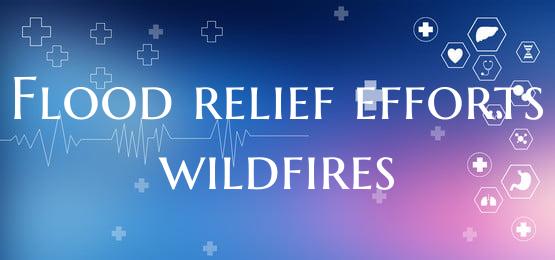
Flood relief efforts wildfires
In recent times, the effects of climate change have made natural disasters a harsh reality for many communities around the world. Among the most devastating events are wildfires and floods, which often occur in close succession, compounding the challenges faced by affected regions. This dual challenge requires swift and coordinated response efforts to provide relief and support to those impacted.
Wildfires have become increasingly common due to rising temperatures and changing precipitation patterns, leading to drier conditions that fuel the spread of fires. These incidents can lead to widespread destruction of forests, homes, and infrastructure, displacing communities and causing significant environmental damage. In the aftermath of a wildfire, the scorched earth becomes highly susceptible to flash floods when rain eventually falls, as the burned vegetation is no longer able to absorb water, increasing the risk of mudslides and erosion.
The combination of wildfires and subsequent floods poses unique logistical and humanitarian challenges for relief efforts. Emergency response teams must navigate through treacherous terrain, often hindered by debris and unstable ground conditions. Swift evacuation plans are essential to ensure the safety of residents in high-risk areas, while also providing support for those who have been injured or lost their homes.
Coordinating relief efforts in the face of these dual disasters requires a multi-faceted approach that involves collaboration between government agencies, non-profit organizations, and local communities. Deploying resources such as firefighting equipment, medical supplies, and emergency shelters is vital to assist during the immediate crisis. Additionally, long-term strategies for recovery and rebuilding must be implemented to help affected communities regain stability and resilience in the face of future disasters.
In conclusion, addressing the dual challenge of wildfires and floods requires a comprehensive and compassionate response from all stakeholders involved. By working together and prioritizing the needs of those affected, we can provide vital support during times of crisis and help communities rebuild stronger in the aftermath. Only through proactive preparedness and effective disaster response can we mitigate the impacts of these interconnected natural disasters and protect the well-being of all individuals.